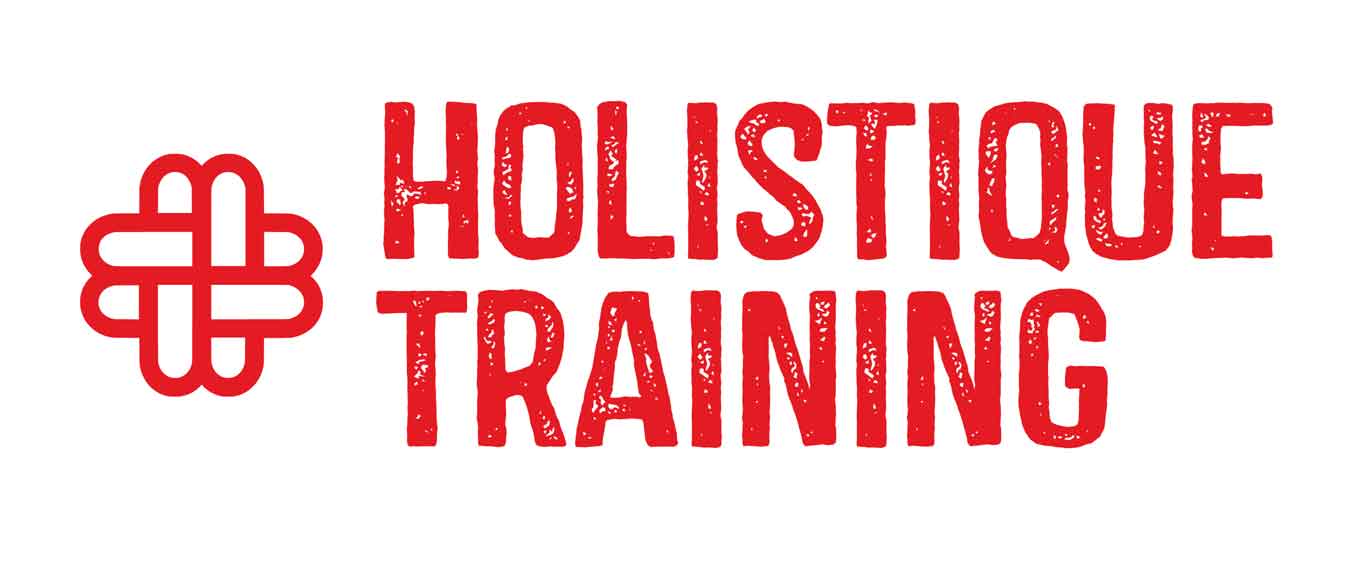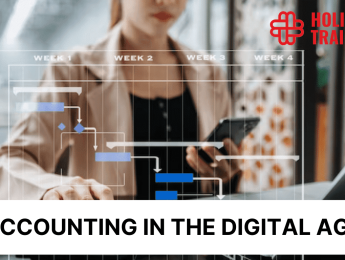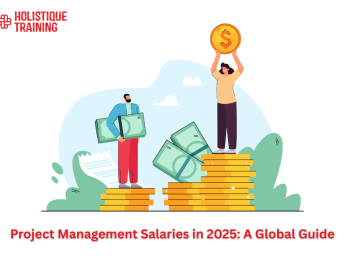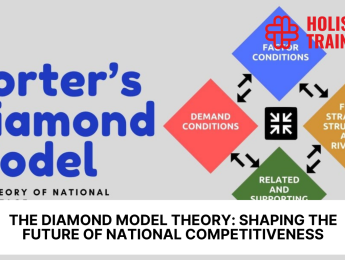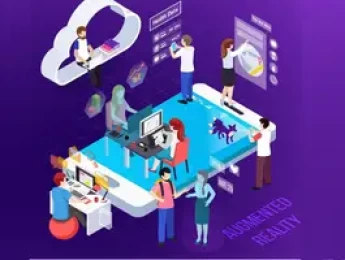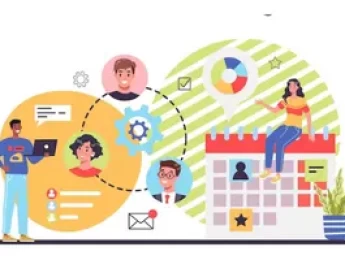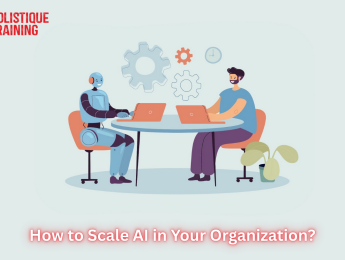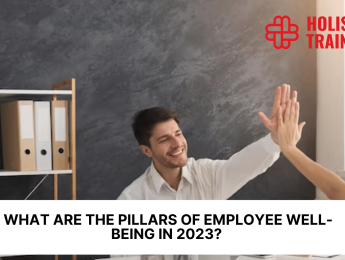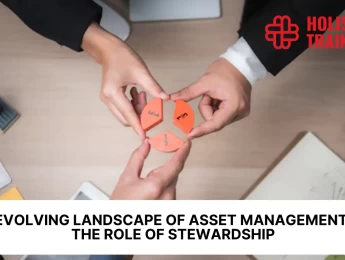- Table of Contents
- 1. Introduction
- 2. The Great Misunderstanding About Retention
- The Myth of the "Golden Handcuffs"
- The Perks Illusion
- Maslow’s Hierarchy of Employee Needs
- Why EmployeesActually Leave
- The Psychology of Staying
- To Recap: The Great Misunderstanding
- 3. The Real Secret: Purpose Over Perks
- 4. Building a Culture of Belonging
- 5. Growth, Feedback, and Recognition
- 6. The Cost of Losing Talent
- 7. The Role of Leadership
- 9. Conclusion
1. Introduction
What truly makes an employee walk away from a seemingly “great” job? It’s rarely just about salary, titles, or office perks. Today’s workforce is driven by deeper values: purpose, recognition, emotional safety, and a sense of belonging. While many organizations chase retention with surface-level benefits, they often overlook the fundamental human needs that actually keep talent engaged and loyal.
In this article, we uncover the real forces behind employee turnover—from broken communication and misaligned values to ineffective leadership and missing career paths. Backed by research and expert insights, we explore how organizations can build a culture where people not only stay—but thrive.
2. The Great Misunderstanding About Retention
Let’s be honest, when employees leave, most companies are quick to point fingers at compensation packages, job offers from competitors, or even generational differences. But more often than not, these surface-level excuses distract from the deeper, cultural misfires that push people out the door.
The Myth of the "Golden Handcuffs"
Companies often believe that offering higher salaries, fancy perks, and performance bonuses will be enough to retain top talent. And while competitive pay is essential to attract candidates, it’s rarely what makes them stay.
According to a 2022 McKinsey & Company report, nearly41% of employees who left their jobs said they did so because they didn’t feel valued by their organization, while36% cited a lack of meaningful work as a major reason for leaving. "Companies are failing to recognize that employees are reevaluating what they want from work, and many are leaving because their expectations aren't being met." –McKinsey & Company
Let that sink in: People aren’t just chasing a bigger paycheck; they’re walking away from companies where their contributions feel hollow or ignored.
The Perks Illusion
Let’s talk about those snack bars, yoga classes, and on-site massage chairs. Sure, they make for flashy Instagram posts and fun office tours, but when it comes to actual retention, they're often just distractions from deeper cultural gaps.
According to Gartner, only17% of on-site knowledge workers feel culturally connected to their organization, less than their remote (24%) and hybrid (25%) counterparts. That means being physically present in a perk-filled office isn’t enough to make employees feel truly connected or committed.
Meanwhile, Forbes reports emphasize that a positive workplace culture, not perks, is what actually keeps people around, especially in competitive markets. The disconnect is clear: Companies are investing in happy-hour optics, while employees are craving purpose, connection, and growth.
Maslow’s Hierarchy of Employee Needs
To understand why perks and money aren’t enough, it helps to revisit Maslow’s hierarchy of needs, a psychological theory often applied to workplace motivation.
Here’s how it applies to the employee experience:
Level | Employee Equivalent |
Basic needs | Salary, benefits, and job security |
Psychological needs | Team relationships, recognition, and belonging |
Self-fulfillment needs | Purpose, growth, and contribution to something bigger |
Many companies fixate on fulfilling only the bottom tier. They forget that people also need emotional and psychological fulfillment at work. When those needs go unmet, disengagement creeps in.
Why Employees Actually Leave
Let’s break down some of the most overlooked reasons for employee attrition:
Lack of Appreciation
One of the fastest ways to drive top talent out the door? Make them feel invisible. Employees don’t need confetti and champagne to stay motivated, they need to know their contributions matter. When their hard work consistently goes unrecognized, even the most passionate team members will start to wonder, “Why bother?”
Recognition doesn’t have to be expensive, elaborate, or public. Sometimes, a simple “thank you” or a direct message acknowledging a job well done can mean more than any bonus. It's not about making people feel like heroes, it’s about making them feel human.
Poor Communication
When leadership keeps its vision locked behind closed doors, employees are left guessing, and guessing creates anxiety. Inconsistent updates, vague direction, or radio silence from the top can quickly lead to disengagement. If people don’t know where the company is headed, how can they feel confident in their role or their future within it? Transparent communication builds trust. It says, “You’re not just an employee, you’re part of this journey.” And when people feel included, they’re far more likely to stay committed.
No Alignment with Values
Even well-paid, well-treated employees will eventually walk away if they feel morally or ethically out of sync with the company’s direction. It’s not just about what the organization does, but how it does it, and why. Employees today want to be proud of who they work for. If the company’s values don’t match their own, they’ll start looking for a place that does. This goes beyond mission statements. It’s about how those values show up in daily decisions, leadership behavior, and the company culture at large.
The Psychology of Staying
At the core of retention lies a simple truth: people stay where they feel they matter.
Psychologists call it the “psychological contract”, an unwritten set of expectations between employer and employee. When employees feel this contract is broken (through lack of trust, transparency, or growth), they start mentally checking out long before they resign.
To Recap: The Great Misunderstanding
3. The Real Secret: Purpose Over Perks
“A well-crafted Total Rewards Strategy goes beyond being a set of perks; it becomes a dynamic force that propels both individual and organizational success.” And at the heart of that force? Purpose.
We often think of rewards in terms of salary, bonuses, or benefits, but increasingly, employees are asking for something more powerful: meaning. While exact percentages may vary, multiple studies and reports agree, employees are more likely to stay in roles where they feel their work matters. They don’t just want to clock in and collect a paycheck. They want to contribute to something bigger than themselves.
Why Purpose Matters:
- It gives employees a reason to stay during hard times: When workloads spike or stress levels rise, a strong sense of purpose helps people push through. They’re not just grinding, they’re building something meaningful.
- It fosters emotional connection to their role and company: Purpose transforms a job into a mission. Employees who feel emotionally invested are more likely to stick around, advocate for the company, and go the extra mile.
- It reduces burnout and increases engagement: Burnout often stems from disconnection. Purpose brings clarity, alignment, and motivation, which boosts engagement and overall satisfaction.
In the end, purpose isn’t fluff, it’s fuel. When people understand why they’re doing what they do, they show up differently. They stay longer. They care more. And they help build something that lasts.
4. Building a Culture of Belonging
When employees feel that they belong, they are far less likely to seek opportunities elsewhere. Instead of focusing on exit strategies, they are more inclined to look for ways to grow within the organization. This is why creating a sense of belonging is one of the most powerful tools in retaining top talent.
Why Belonging Matters:
- Emotional Investment: Employees who feel like they belong are more emotionally invested in their work, which leads to higher levels of engagement and commitment.
- Reduced Turnover: A strong sense of belonging fosters loyalty. People who feel connected to their organization are far less likely to leave, even in challenging times.
- Increased Collaboration and Innovation: When people feel included, they’re more willing to share ideas, collaborate, and contribute creatively to the company's success.
“Candidates are more likely to choose a company where they feel welcomed, valued, and able to connect with like-minded colleagues.”
Read more on: 12 Effective Strategies for Modern Recruitment in 2025
Actionable Tips:
- Encourage Open Dialogue and Feedback Loops: Regular, open communication helps employees feel heard and valued. This feedback loop not only informs leadership about the concerns and aspirations of employees but also builds trust, which is crucial for retention.
- Offer Flexible Schedules and Hybrid Work Options: Flexibility is a key driver in creating a culture of belonging. In today’s world, where work-life balance is highly prioritized, providing options such as flexible schedules and remote work opportunities helps employees feel supported and included.
- Ensure Diversity Isn’t Just Visual, it’s Structural: Diversity must go beyond just having people of different backgrounds in the workplace. It should be embedded in the organizational structure, policies, and leadership practices. Ensuring that diverse voices are heard at all levels of the company helps foster an inclusive culture where everyone feels they belong.
5. Growth, Feedback, and Recognition
Stagnation is one of the quickest ways to lose valuable talent. Employees, especially in the current job market, want to feel like they are growing, not just professionally but also personally. They need to see that their hard work is noticed and appreciated, and that there is a clear path for career progression.
Why Growth, Feedback, and Recognition Matter:
- Continuous Learning and Development: People want to know that they’re growing in their roles. Offering continuous learning opportunities, such as training programs, workshops, and upskilling initiatives, can help employees feel empowered and confident in their roles. It also ensures they are prepared for future challenges within the organization.
- Timely and Constructive Feedback: Employees need feedback, not only to improve but to understand how their contributions fit into the bigger picture. Both positive (celebratory) and constructive (developmental) feedback are critical in making employees feel valued.
- Recognition Drives Engagement: When employees feel their contributions are recognized, they are more likely to stay with the company. Recognition can be a simple thank you, a public shout-out during meetings, or even a peer-nominated award. Importantly, recognition doesn’t have to come at a high cost; often, a personal touch can go much further.
What to Focus On:
- Continuous Learning: Offering employees the chance to develop their skills not only enhances their professional growth but also signals that the organization is invested in their future. In fact, 94% of employees report they would stay longer with an employer who invests in their learning and development, according to LinkedIn Learning.
- Timely Feedback: Timely feedback is crucial for employee growth and engagement. It provides clear, real-time guidance, helping employees stay aligned with goals and improve continuously. Regular feedback fosters trust, supports a growth mindset, and makes employees feel valued, leading to higher job satisfaction and stronger team loyalty.
- Transparent Pathways for Promotion: Employees who understand how to advance in their careers are more likely to stay with a company. According to BrightHR, when employees are offered clear career path options, they are more likely to be more engaged, productive, and consider staying at their company for longer, which can help companies retain top talent.
Recognition Doesn’t Have to Be Expensive:
Recognition can be simple and cost-effective, and it’s important to remember that its impact is often amplified by the sincerity behind it.
- Handwritten Notes from Leadership: A handwritten note from a leader expressing gratitude can have a powerful effect on employee morale and loyalty. It shows that leadership is paying attention to individual efforts.
- Shout-Outs During Meetings: A quick mention of an employee’s achievement during team meetings not only makes the individual feel appreciated but also sets a positive example for the entire team.
- Peer-Nominated Awards: Allowing employees to nominate their peers for recognition is a great way to encourage teamwork and show that every contribution is valued.
Timely feedback is essential for fostering a culture of growth and engagement in any organization. To truly support employees in their development, managers need the right tools and strategies to provide constructive feedback that drives performance improvement. The Performance Appraisal Training for Managers and Advanced HR Administration courses offer valuable resources for building these skills and aligning talent management with organizational goals. The Performance Appraisal Training for Managers course helps managers conduct effective performance reviews, ensuring feedback is not just evaluative but developmental, encouraging continuous improvement.
Similarly, the Advanced HR Administration course provides a comprehensive understanding of HR practices that contribute to a positive work environment and help attract and retain top talent. Together, these courses empower organizations to create a culture of open communication, trust, and mutual growth.
6. The Cost of Losing Talent
Employee turnover doesn’t just affect your company’s culture, it directly impacts your bottom line. The costs associated with losing talent go beyond the obvious expenses like recruitment; they affect productivity, team morale, and even the long-term stability of your business.
What Turnover Costs:
- Recruitment: Hiring a new employee is expensive. On average, it costs about$4,700 per hire, but this figure can vary depending on the role and the hiring process. These costs include advertising, interviewing, and administrative tasks, as well as potential relocation expenses for new hires. The financial burden of constantly recruiting to replace lost talent can add up quickly.
- Lost Productivity: It typically takes6 months or more for a new employee to fully ramp up and reach the productivity levels of a seasoned team member. During this period, there’s often a gap in work output, leading to missed opportunities and delayed projects. The longer it takes for a new hire to get up to speed, the more it costs the organization in terms of time and resources.
- Team Morale: Employee departures can have a significant impact on team morale. When a colleague leaves, it disrupts the team dynamic, which can result in decreased trust in leadership and a loss of motivation among remaining employees. As each exit creates uncertainty, it also contributes to an overall drop in productivity and engagement, as team members may start questioning their own roles and job security.
7. The Role of Leadership
Leadership profoundly influences an organization's culture, employee satisfaction, and overall success. Effective leaders set the tone for their teams, intentionally or not, and their actions resonate throughout the organization.
Key Traits of Effective Leaders:
- Active Listening: By genuinely listening to employees' concerns and ideas, leaders demonstrate respect and value for their team's input, fostering an environment where individuals feel heard and understood.
- Empathy: Understanding and sharing the feelings of team members allows leaders to connect on a human level, building trust and facilitating open communication.
- Investment in People: Prioritizing employee development and well-being over mere performance metrics shows a commitment to the team's growth, leading to increased loyalty and motivation.
It's often said that employees don't leave companies; they leave managers who fail to meet their needs. This underscores the critical role leadership plays in retention and engagement.
As highlighted in the Harvard Business Review (The Secret to Becoming a Better Manager), the best leaders are gardeners. They don’t command growth; they create the environment where it happens. This analogy emphasizes that effective leadership is about cultivating conditions that allow individuals and ideas to flourish.
To develop such leadership qualities, courses like Strategic Leadership and Leadership, Innovation, and Communication offer valuable insights. The Strategic Leadership course focuses on guiding organizations toward long-term objectives by articulating a clear vision and understanding both internal dynamics and the external business environment.
Similarly, the Leadership, Innovation, and Communication course emphasizes the integration of effective leadership with innovative thinking and strong communication skills to foster a cohesive and forward-thinking work environment.
By engaging in these educational opportunities, leaders can enhance their ability to create supportive environments where employees feel valued, leading to improved retention and organizational success.
9. Conclusion
Retaining talent goes beyond just offering big perks or the highest salary. It's about making people feel truly valued. When employees feel a sense of purpose, belong to the team, and have opportunities to grow, they don’t just stay; they thrive. So, instead of asking, “How can we keep people here?” let's start asking, “How can we create a place where people never want to leave?”
Want to explore more about creating a workplace that people love? Stay connected with us! Visit our website for insightful articles, helpful courses, and resources that will help you build a thriving team. Let’s keep the conversation going!
